In the clear light of early morning, I cycled hard through Townsville’sBicentennial Park, revelling in the cool breeze and songs of birds – mynas, peaceful dove, magpie-larks, golden-headed cisticolas. The Ross River ran full and wide, blue and strong in the sun. I knew I would miss it when we are once again ensconced in our old farmhouse in Nova Scotia and surrounded by parkland and forest. The Matheson Brook that runs through a narrow ravine below our house is a mere whisper compared with the power of this river, although our brook has its moments, too, after heavy rains transform it into a raging torrent fed by water pouring off too much clear-cut land.
On my return to the house, I worked at catching up more blog entries from our Tasmania trip and decided on my topic for today. During our hiking and camping excursions in Tasmania, Vilis suggested that I should write a post about setting up a tent.
I said, “Everyone knows how to put up a tent.”
He said, “Are you kidding?”
So, here goes. All of the photographs included below were taken at the Baker’s Point campground in Narawntapu National Park on the north coast of Tasmania.
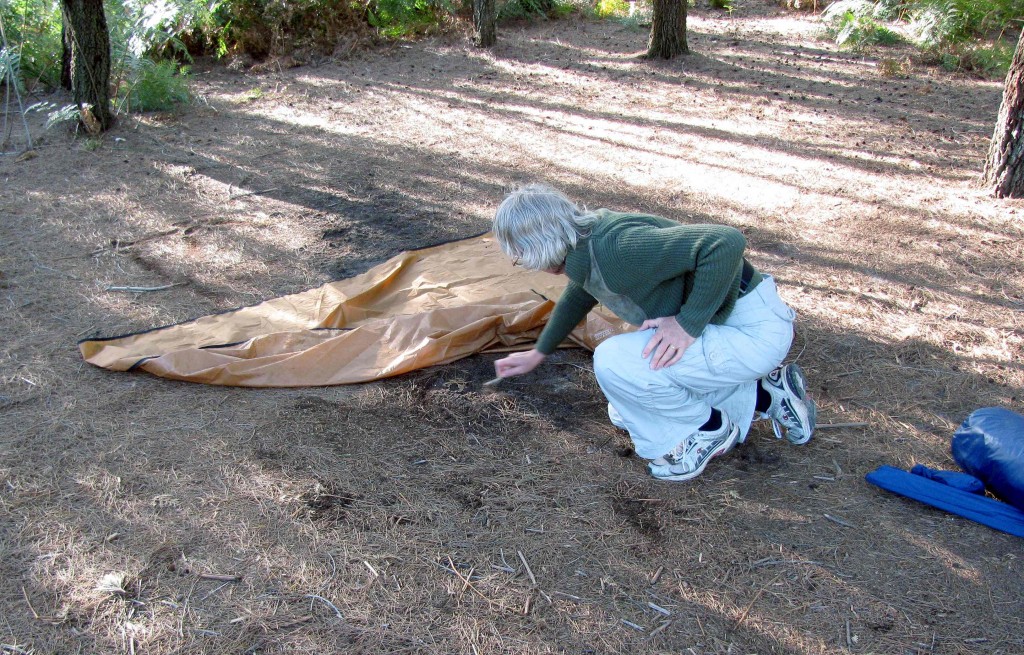 1. Select a level area on the ground and remove any loose or protruding stones and branches from the surface on which you wish to place your tent. At the Baker’s Point campground, we also had to remove cones that had fallen from the she-oak trees. Stretch out your ground sheet on your selected site, and mark its corners with scratches in the ground. Then lift it away from where you will be sleeping and dig out a wide, shallow depression corresponding to where your hips will be. I also dug a depression for my shoulder, since I almost always sleep on one side. Digging these depressions, which was Vilis’s idea, greatly increased our comfort, since we slept on thin, light, portable foam mats intended for backpacking.
1. Select a level area on the ground and remove any loose or protruding stones and branches from the surface on which you wish to place your tent. At the Baker’s Point campground, we also had to remove cones that had fallen from the she-oak trees. Stretch out your ground sheet on your selected site, and mark its corners with scratches in the ground. Then lift it away from where you will be sleeping and dig out a wide, shallow depression corresponding to where your hips will be. I also dug a depression for my shoulder, since I almost always sleep on one side. Digging these depressions, which was Vilis’s idea, greatly increased our comfort, since we slept on thin, light, portable foam mats intended for backpacking.
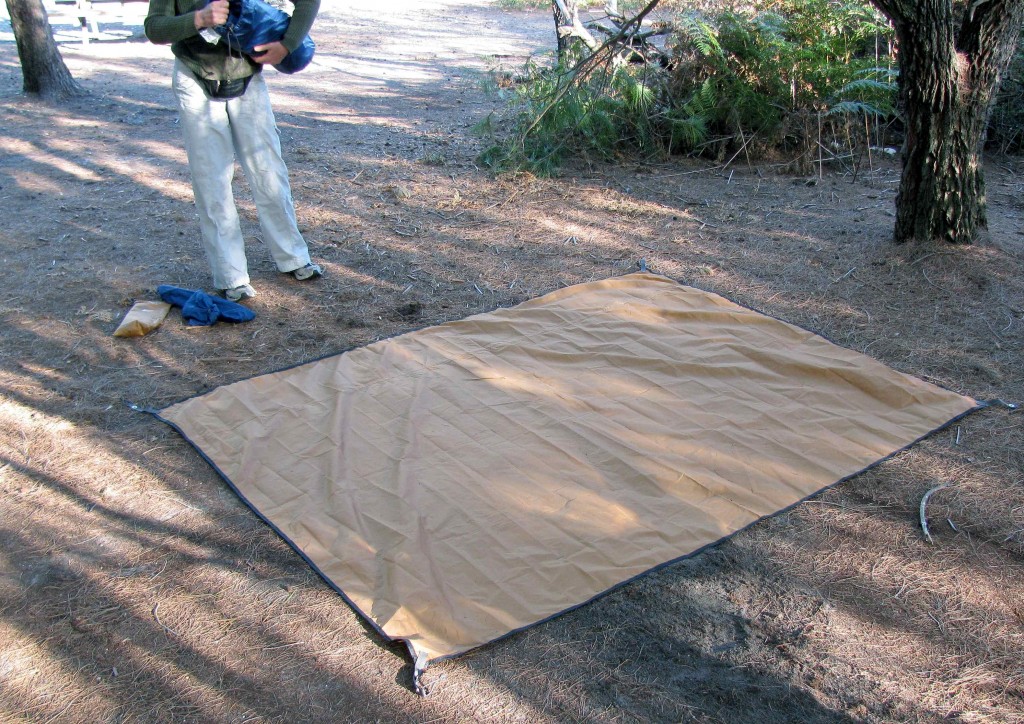 2. Once the site is prepared, stretch out the groundsheet, which will keep the bottom of your tent much cleaner and drier.
2. Once the site is prepared, stretch out the groundsheet, which will keep the bottom of your tent much cleaner and drier.
.
.
.
.
.
.
 3. Assemble the tent poles that will form the support structure for your shelter. For our tent, a Mountain Equipment Co-op Apollo model, the poles were joined together at the centre, an arrangement that allowed for easy assemby and decreased the chance of misplacing a pole.
3. Assemble the tent poles that will form the support structure for your shelter. For our tent, a Mountain Equipment Co-op Apollo model, the poles were joined together at the centre, an arrangement that allowed for easy assemby and decreased the chance of misplacing a pole.
.
.
 4. Attach the tent poles to the tent. For our tent, I first attached the centre of the tent top to the frame, and then pushed the tips of the poles into the inner grommets on the tabs at the corners of the tent base. Finally, I snapped all the fasteners attached to the tent onto the frame of poles.
4. Attach the tent poles to the tent. For our tent, I first attached the centre of the tent top to the frame, and then pushed the tips of the poles into the inner grommets on the tabs at the corners of the tent base. Finally, I snapped all the fasteners attached to the tent onto the frame of poles.
.
.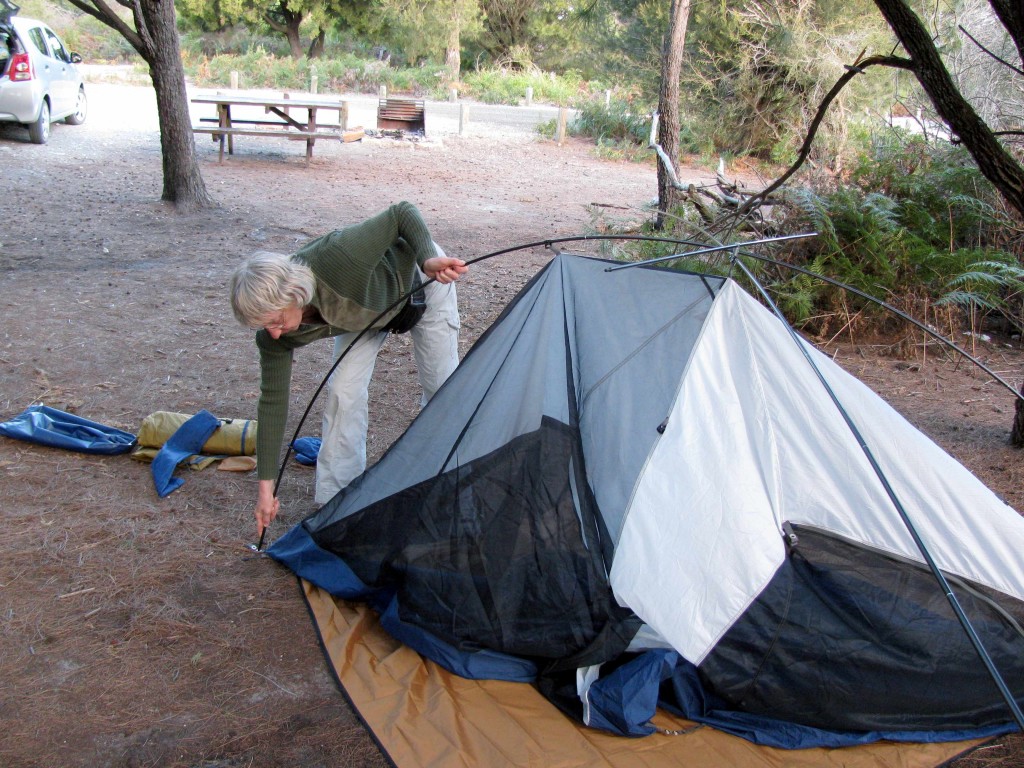
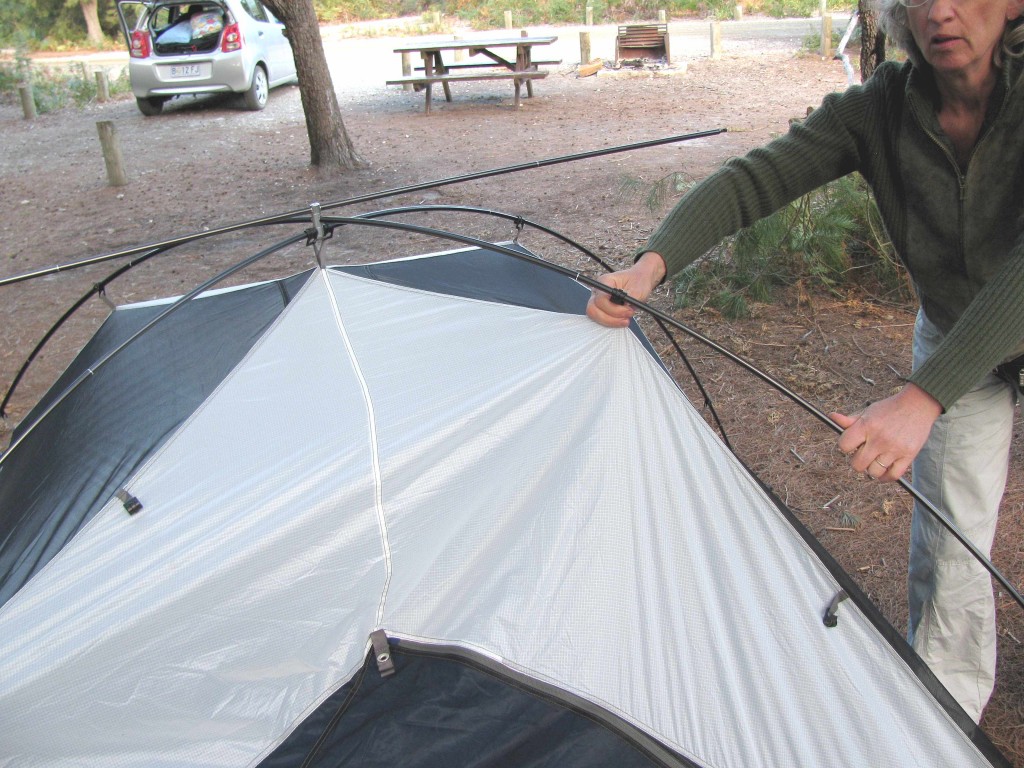
.
.
.
.
.
.
.
.
.
.
.
.
.
.
.
.
.
.
.
.
.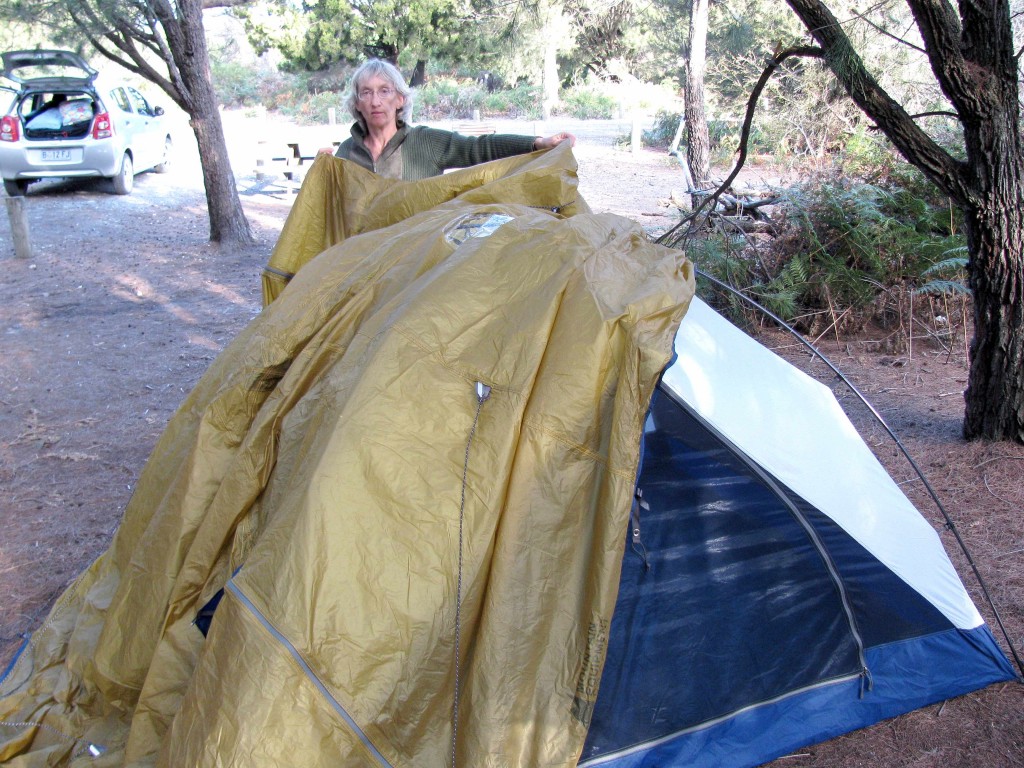
5. Position the fly, which protects the tent from rain, snow, and wind, over the tent, arranging it so the doors of the fly match the doors of the tent. Our tent has two doors, which Vilis and I found very convenient while on our Tasmanian trip, since neither of us had to crawl over the other when getting up in the middle of the night to go to the toilet.
.
.
.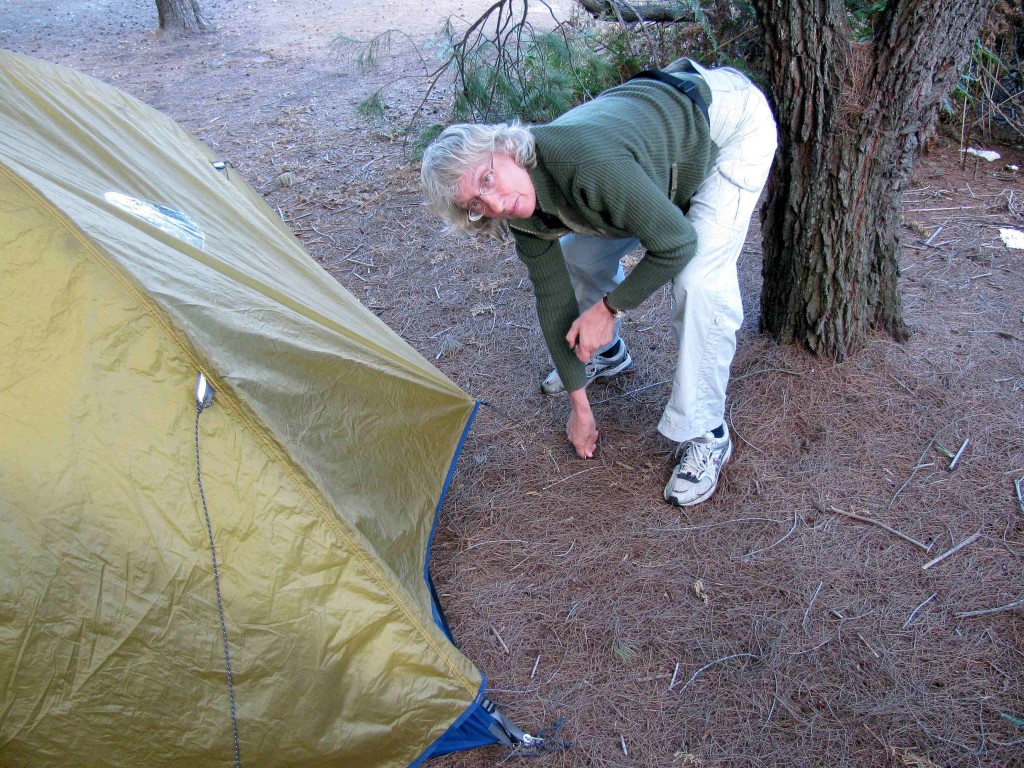
6. Peg the fly and tent to the ground by first inserting tent pegs into the outer grommets on the tabs at the corners of the tent base and slipping the fly tie loops over the heads of the tent pegs. Pound the pegs down into the soil until the tent and fly are securely stationed. Next, pull the fly away from the sides of the tent by tugging on the ties attached to the fly for this purpose. Peg these ties down, too. Note that it’s important to remember that you did this. Otherwise, when you’re wandering around your campsite or get up in the middle of the night to go outdoors, you’ll trip yourself. Also note that, even though you might be tempted to not bother pegging down your tent, if you don’t, it will shift around with your movements and, if empty, might blow away in a strong wind.
Also note that, even though you might be tempted to not bother pegging down your tent, if you don’t, it will shift around with your movements and, if empty, might blow away in a strong wind.
8. Place your sleeping mats, sleeping bags, and pillows (we had the luxury of car camping, and I’m particular about my pillows) in the tent, along with a flashlight and clothes for the next morning. Then, when darkness falls and weariness sets in, slip into your sleeping bag, snuggle down, and let the sound of the ocean lapping against a rocky shore, or the wind whispering a song in the treetops, lull you to sleep.


